Much before Dora Milaje – the warrior women of the movie Black Panther evoked awe and admiration from people all over the world, there were the Dahomey Amazons – the elite fighting women force of Kingdom of Dahomey. Just like the Dora Milaje protected the fictional kingdom in the movie – Black Panther, the Dahomey Amazons protected the real West African kingdom of Dahomey.
Most people may not be knowing about the Kingdom of Dahomey, for them it would help to mention that this was the home of Dahomey Amazons, before it fell to the French forces when European countries were colonizing the African nations in the 19th century. In the modern world, this land is the West African country of the Republic of Benin.
The Dahomey Amazons in their own land, in their own time, were known as “N’Nonmiton” meaning our mothers, reflecting the respect and special place that they had in the hearts of people living in the land. However, the Europeans, when they first saw these fierce fighters of the Kingdom of Dahomey they were at a loss for words.
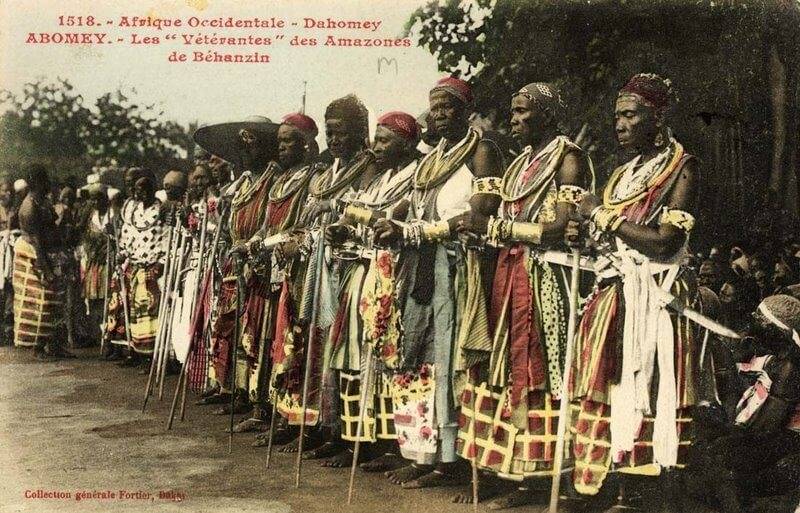
How to describe these deadly warriors in a strange distant land, was a dilemma that could not be solved, till the memories of Amazons of Greek mythology, brought a familiar picture to the mind of these Europeans. Hence 2000 years later, the tales of Amazons were again reborn in Africa, as – The Dahomey Amazons. Thanks to the stories of mythical Greece, the women in the historical 19th century Western Africa - the Amazons of Dahomey, had finally found an identity that the world would remember forever.
Sometimes great stories have a very subtle and hazy beginning and this is the case with the Amazons of Dahomey. Dahomey Amazon’s history starts somewhere in the 17th century when the force that would later become famous as Dahomey Amazons first came into existence, just a short while after the kingdom was founded by Dako, a leader of the Fon tribe around the year 1625.
Some tale describes that initially, these women played a role only in hunting elephants. But the courage, agility, and skill demonstrated by these women impressed the ruler of Dahomey so much, that he decided to turn them into full-fledged soldiers of his army. Later they also served as royal bodyguards to the king.
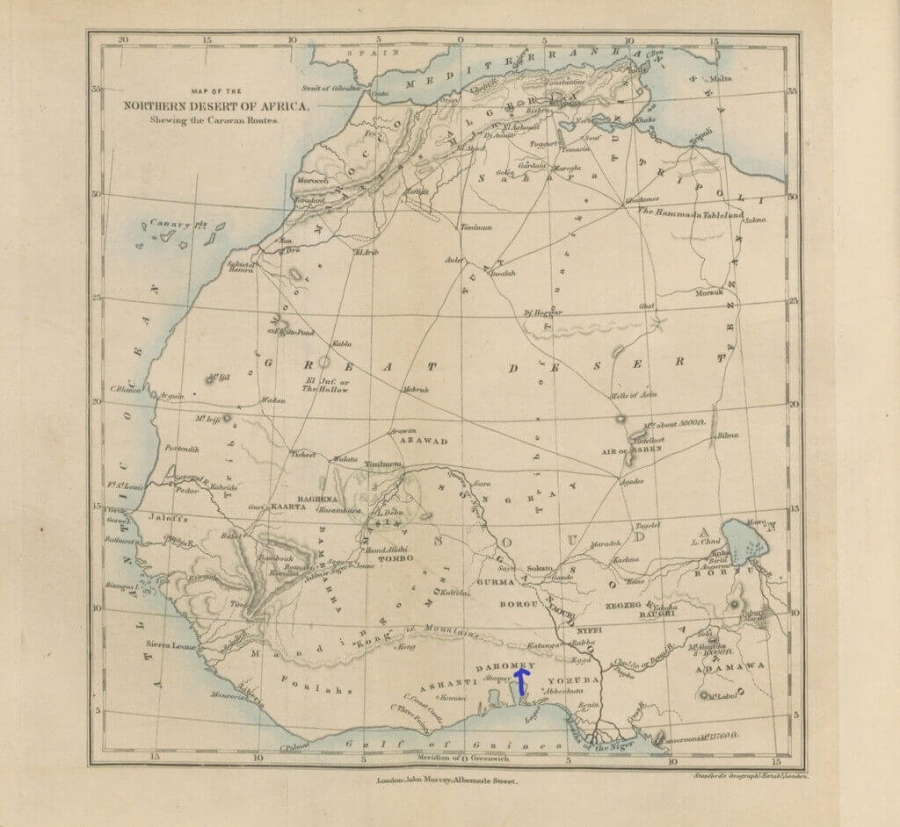
However, many scholars have come up with the theory that inducting women into the military and creation of Dahomey Amazons was a pragmatic approach as the Fon people of Dahomey were highly outnumbered by their enemies, and the King of Dahomey had to use all the resources at his disposal. Loss of men in previous wars and to the slave trade forced the King to create Amazons of Dahomey, for defending the land, along with regular male soldiers of Dahomey army.
The 19th century King Gezo, who ruled from 1818 to 1858, greatly increased the numbers of Dahomey Amazons in his military, taking their number to 6000. The budget expenditure for the Amazons of Dahomey was increased, as well as their equipment and training. The training included wrestling, survival in the difficult jungle with minimal rations, and climbing over thorn hedges, which no doubt was painful, but was done with the intention to make the Dahomey Amazons more resilient to pain.
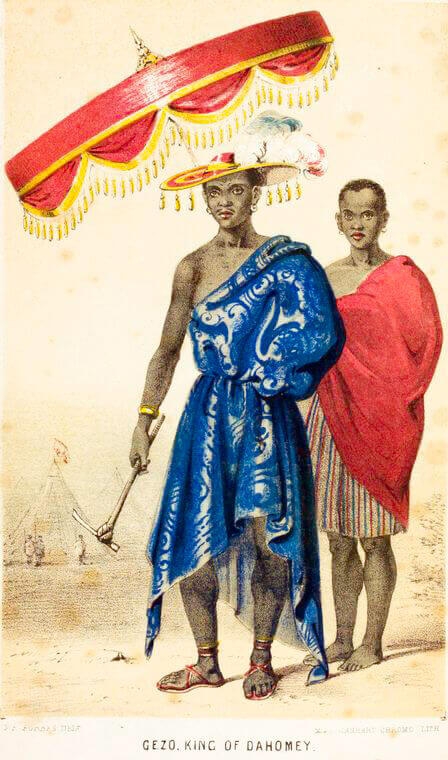
The king was forced to undertake these changes after a previous confrontation with his enemies, which inflicted heavy losses on the Kingdom of Dahomey. However, thanks to the initiatives of the king, the Amazons of Dahomey would soon emerge as a dangerous, highly efficient, well equipped fighting force, with a reputation that would even spread out from Africa to lands far and wide.
Many of the women, who were formally wives of the king, but had not borne him children or were considered not beautiful enough for marital responsibilities finally ended up as the Amazons of Dahomey (The 21st-century social values were not yet in place). Historically these women have been given the ignoble designation of being the 3rd class wives of the King. However, these women who did not have any actual marital relationship with the king were considered trustworthy enough to serve as royal bodyguards.
Many Amazons of Dahomey, had joined the organization on their own free will. However, some women, who were considered as unruly by their fathers or their husbands, who had complained to the king about the behavior of these women were also forcefully enrolled. The aggressive nature of these women was expected to turn them into better soldiers at the time of war.
The Amazons of Dahomey were enrolled in the force at a very young age, some even when, they were just 8 years old. The Dahomey Amazons had to undergo very tough intense training before they were allowed to join these elite group of fierce female fighters. This training consisted of heavy physical exercises, learning surviving skills, tolerating strong pain, practicing climbing over acacia thorn defense fortifications & to control the fear of death while maintaining discipline.
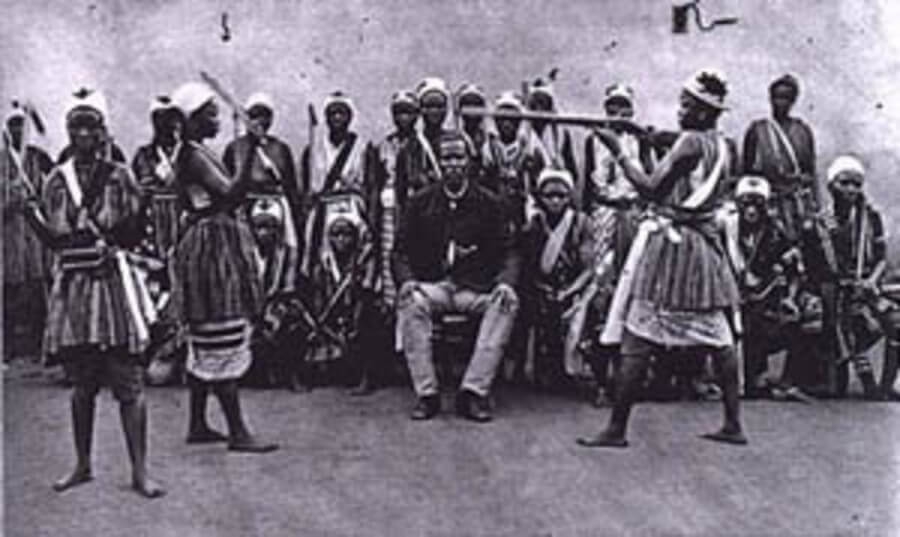
The Dahomey Amazons like troops of the modern world also had their own parade, where the review of the troops was undertaken. The Amazons of Dahomey also swore an oath of loyalty to the king during these occasions. Mock battles were enacted, to convince their own people that the Amazons were quite prepared to tackle any threat to their realm; at the same time, these battle practices also scared any potential enemy of the Dahomey King or to the Kingdom.
Most of the descriptions about the Amazons of Dahomey came from the Europeans, who had come across them. By the mid-19th century, the Dahomey Amazons accounted for 1/3rd of the entire Dahomey force, a number estimated to be somewhere around 6000 women. These were again divided into different regiments like – archers, gunners, reapers, riflewomen, and huntresses.
The different regiments of Amazons of Dahomey had their distinct weapons, uniforms, and commanders, which made the Dahomy fighting force quite organized and a formidable opponent for any enemy. Some of the Dahomey Amazons also had 3 strips of whitewash around each of their legs, which signified that some of these had been honored for their courage & skills.
The Dahomey Amazons were the only people in the Kingdom of Dahomey who were allowed inside the King’s palace after dark, and hence served as his bodyguards. Dahomey men were not allowed this privilege, to ensure that anyone with nefarious intentions could not come close to the king or did not harm the king in any way and take over the kingdom.
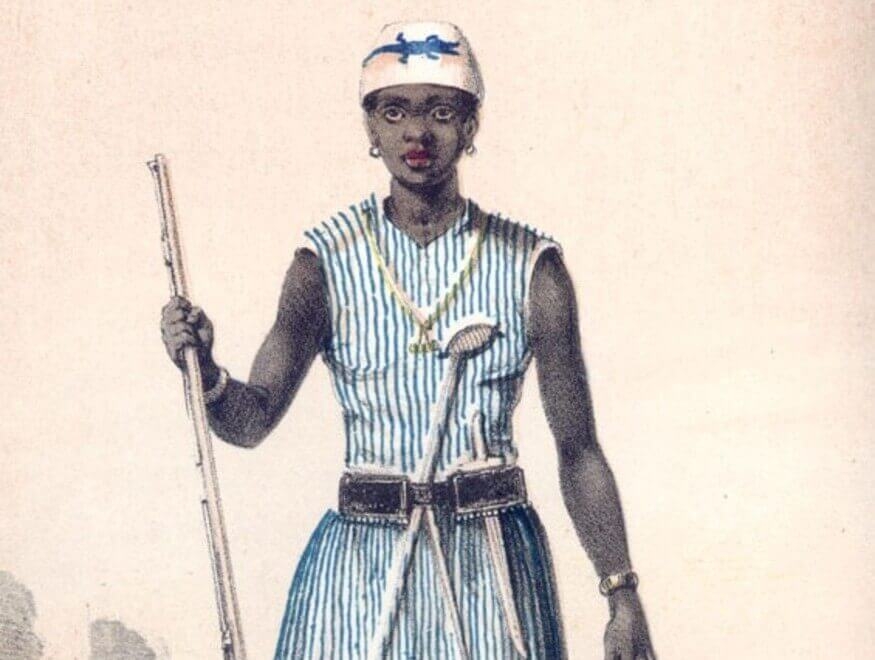
The Dahomey Amazons were highly respected in the Dahomey society and had a sacred status. Even if any male touched them, they would get the death penalty. Sir Richard Burton, who visited the Kingdom in the 1860s described the special treatment given to the Amazons of Dahomey. When the Amazons walked out of the royal palace, a slave girl walked at their front carrying a bell. The males on the way had to get out of the path of these fierce fighters and look the other way after withdrawing to a certain distance from the Dahomey Amazons. However, on the flip side, the Amazons of Dahomey were not allowed to marry and have children.
However, these fierce fighters had some privileges, compared to normal women of the time, whose lives were hard and involved a lot of hard and monotonous work. One report also mentions that King Gezo kept the troops in his own compound and they received perks like plenty of tobacco and alcohol. Besides they also had slaves to assist them in daily life.
The wealth and high status of Dahomey Amazons made them quite influential. Due to their proximity to the king, they had a say in the policy of the kingdom, which included commerce & trade relations as well as diplomatic relations with other African states & sometimes even with the European powers.
One of the first mentions of Dahomey Amazon’s exploits comes from the year 1729 when the Amazons of Dahomey were involved in a pitched battle against members of the Yoruba tribe to regain the control over the port city of Ouidah, which had been taken away from them.
The Amazons of Dahomey also played a very important role during King Gezo’s wars in the middle of the 19th century, where they enjoyed considerable success. However, not always did their attacks ended in victory as was obvious during their attack on – Abeokuta, the capital town of an enemy tribe. Both assaults carried against the fortified town in 1851 and 1864 failed to achieve their objectives.
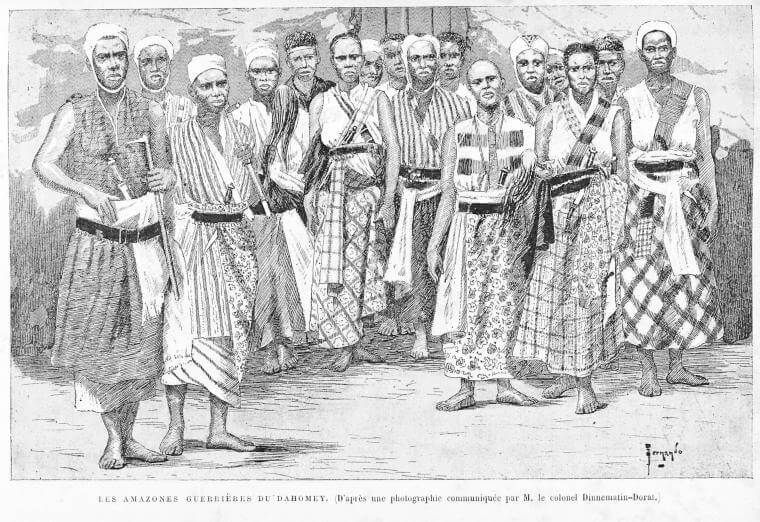
It was towards the end of the 19th century that the Dahomey Amazons would meet their greatest rivals, who would also prove to be their nemesis. The European powers were increasing their influence in Africa and Dahomey would soon end up on a confrontation with the French forces.
It was a raid against a village, which was controlled by the French that initiated the trouble. According to the stories of the time, the general of Dahomey Amazon’s who was leading her army, after conquering the village had the chief of the village executed and carried his head in a French flag to the Dahomey King of the time – Behanzin. The result was expected and confrontation soon ensued between the French and the Dahomey kingdom.
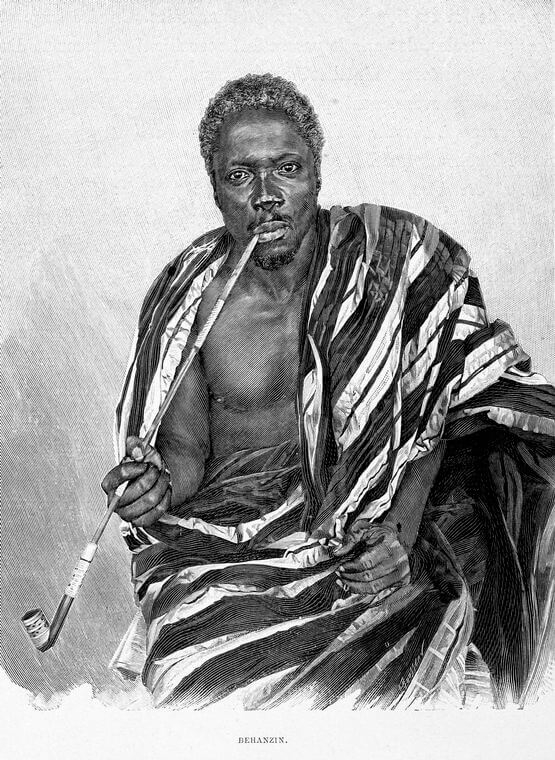
The First Franco – Dahomean War erupted in 1890 when the French forces clashed with the military might of the Kingdom of Dahomey. The Dahomey forces which included the Amazons of Dahomey fought with great valor, which included hand to hand combat. However, the modern rifles of the French army along with an alliance with African soldiers of the Kingdom of Porto Novo, who were traditional enemies of the Dahomey kingdom, turned the tide in the favor of the French.
The Dahomey Kingdom lost the war and the Dahomey Amazons suffered heavy losses. A peace treaty was signed between the 2 sides, where the Dahomey Kingdom had to compromise under humiliating terms, conceding to all of France’s demands.
The truce that followed the First Franco - Dahomean War, was uneasy and unstable with both sides realizing that it was just a matter of time before hostilities erupted once again. The King of Dahomey had also tried his best to equip his military with better weapons, which included thousands of rifles, purchased from the German merchants. The accusations of wrongdoings continued, with each side accusing the other of inciting behavior.
The first shot of Second Franco – Dahomean War were fired on 4th July of 1892, when French gunboats attacked several villages along the lower Oueme Valley. This was the beginning of an invasion with an aim to take over the Dahomey capital of Abomey. In the 23 different battles that followed, the Amazons of Dahomey took an active role in combating the invasion of the French army and suffered heavy casualties. The support of other African tribes, superior intelligence gathering and advanced weapons of the French army, which included long bayonets of the French, which outreached the swords and the machetes of the Dahomey Amazons (and proved lethal for them in hand to hand combat) turned the war in the favor of the French.
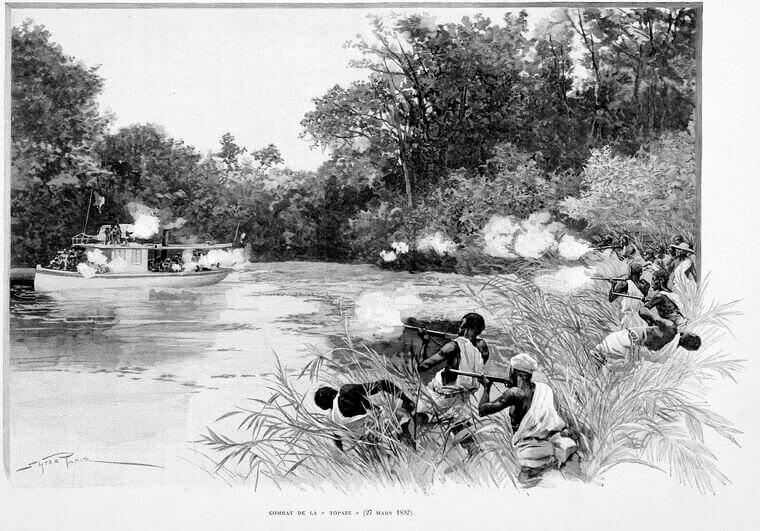
The Second Franco Dahomean War was fiercer than the first one. The military of Dahomey in spite of fighting bravely could not stand against the might of a modern French army. In the final days of War, special units of the Amazons of Dahomey, targeted French officers to inflict the maximum damage. On 17 November 1892, the French army entered Abomey, the capital of the Dahomey kingdom. However, King Behanzin, refusing to allow an invading force to take over the capital, burned and evacuated the city, fleeing north with remaining soldiers.
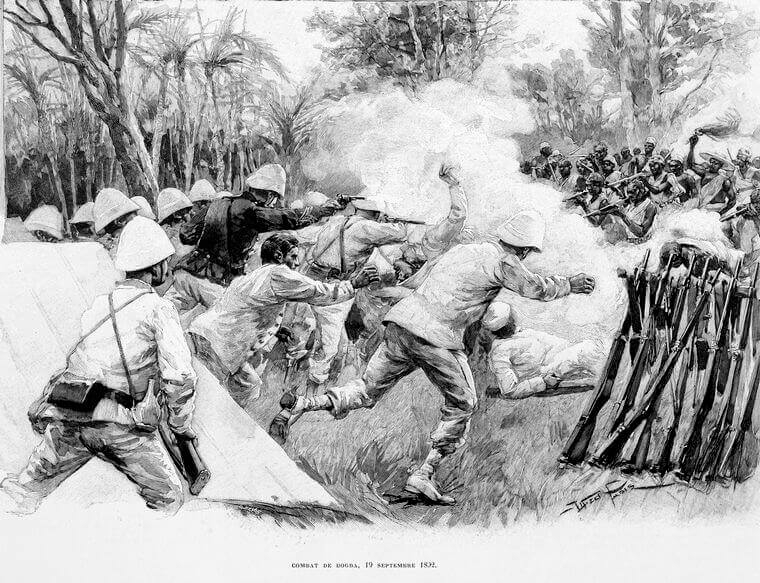
The Kingdom of Dahomey had fallen to the French and the French decided to put Behanzin’s brother – Agoli - Agbo, on the throne as their representative. King Behanzin who was trying to rebuild his army was ultimately forced to surrender to the French on 15th January 1894 and was exiled to Martinique in the eastern Caribbean Sea. Agoli – Agbo ruled for 6 years under the French, when he himself was exiled and the control of the land went directly into the French hands. The golden age of the Kingdom of Dahomey, as well as Amazons of Dahomey, had finally ended forever.
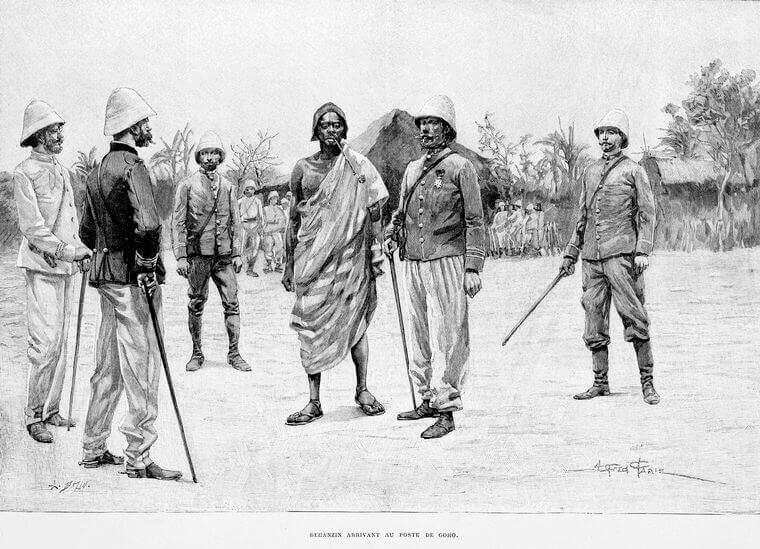
Once Dahomey became a French protectorate the Amazons of Dahomey were disbanded. However, some of the surviving Dahomey Amazons remained in the capital city of Abomey hiding their true identity and secretly assassinated many French officers. Some stories also mention that a few Dahomey Amazons hid themselves, as wife to the next king – Agoli Agbo, thus staying close to him to guard the last King of Dahomey. However, once the last king was sent to exile, the Dahomey Amazons found themselves in a totally changed world.
Some got married and settled down in family life whereas others stayed single, however, the majority of the surviving Amazons of Dahomey had difficulty in adjusting to normal social life. As retired respectable warriors they had a special place in the hearts of the people and they themselves found it difficult to adjust to the dull and routine schedule of normal life.
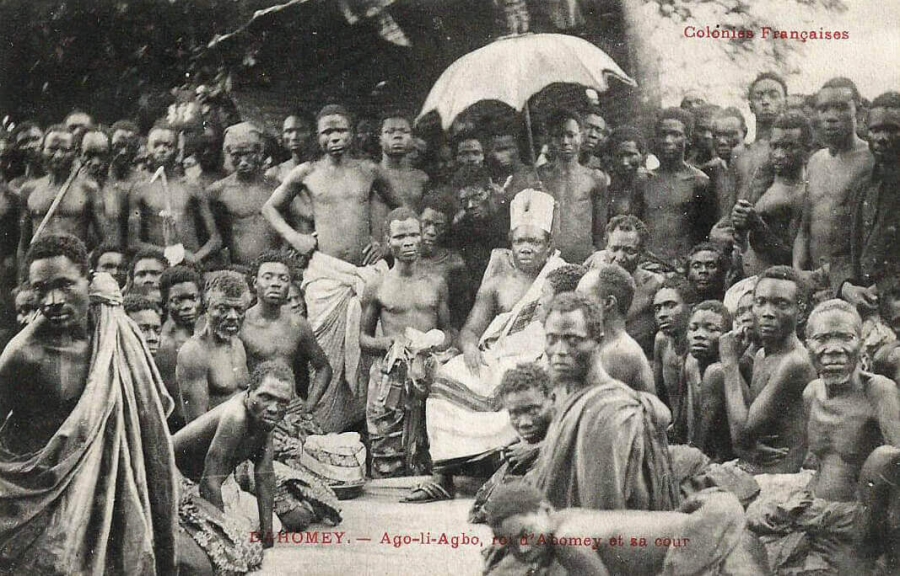
The last surviving member of Amazons of Dahomey was a woman named Nawi, who in an interview in 1978, told a Beninese historian that she had fought the French in 1892. She died in November 1979, supposedly at an age well over 100 years thus bringing an end to the glorious legacy of perhaps the greatest race of warrior women to have ever walked the surface of planet Earth.
Although the story of these Black female fighters and pride of Africa has been forgotten in the pages of history; but time and again their stories resurface in some form or the other in mind or hearts of the people. They were fierce women, who dedicated their entire lives in the serviced of the king and the country, and their sacrifices command respect to this day.
The Amazons of Dahomey believed that when they fought in the battles and triumphed on their enemies, they became equal to men. However, the truth is that courage, determination, and sacrifice that they showed at the time of war & their discipline, loyalty and dedication at times of peace made them more than equal to most men. The gravest injustice that can be inflicted on them would not be their defeat at the hands of a numerically or technically superior enemy, but their disappearance from the memory of the people.
Do historical legends really disappear in the flow of time? Some believe that they might. However, the truth is legends never stay hidden for long. Almost always they again resurface from the dusty pages of history to influence & inspire not just the people they fought for, but humanity as a whole. The proof lies in the name of Dahomey Amazons itself. Who could know that 2500-year-old legends of Amazons of Greek Mythology would one day be used to describe a warrior tribe of women in Africa, more than 2 millennia later? As Tupac Shakur said – “People die, but legends live forever”.